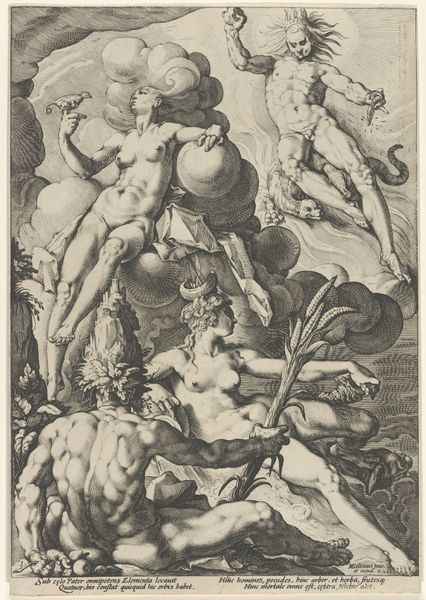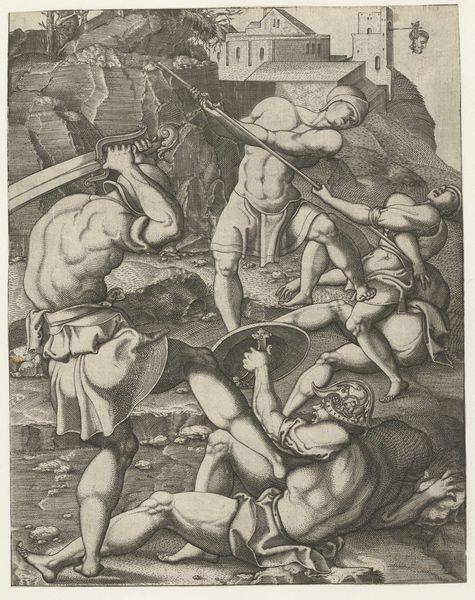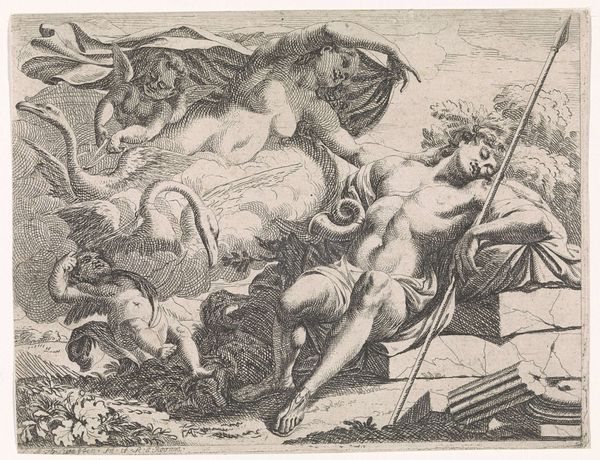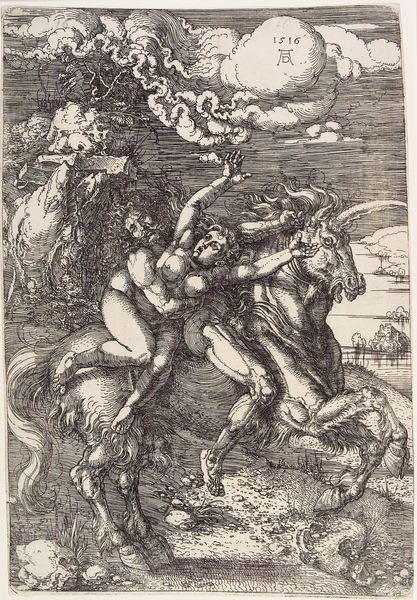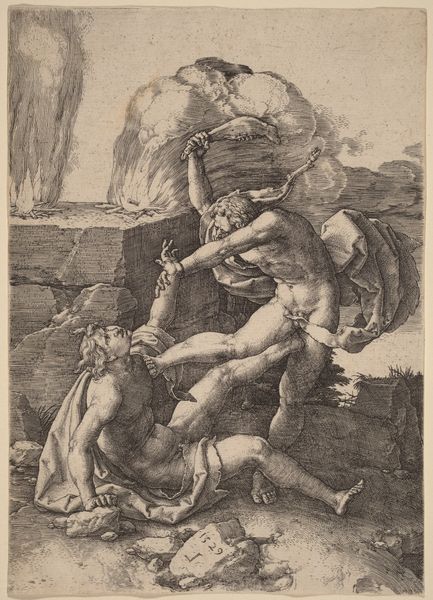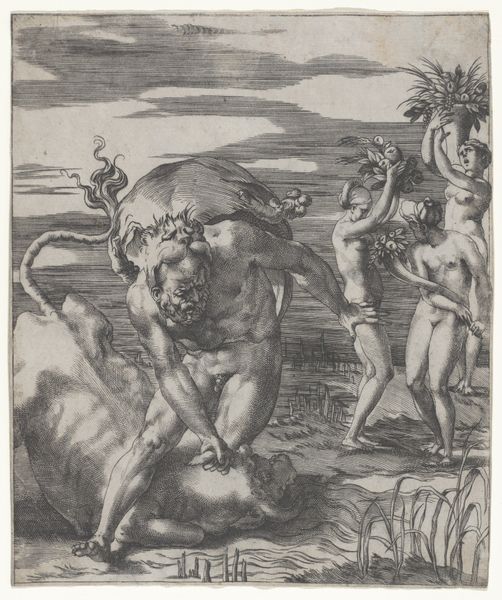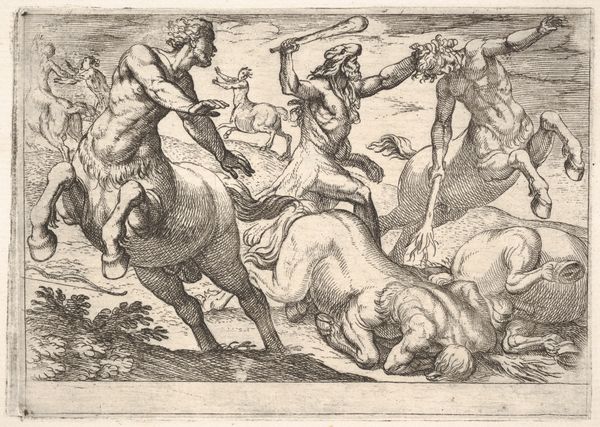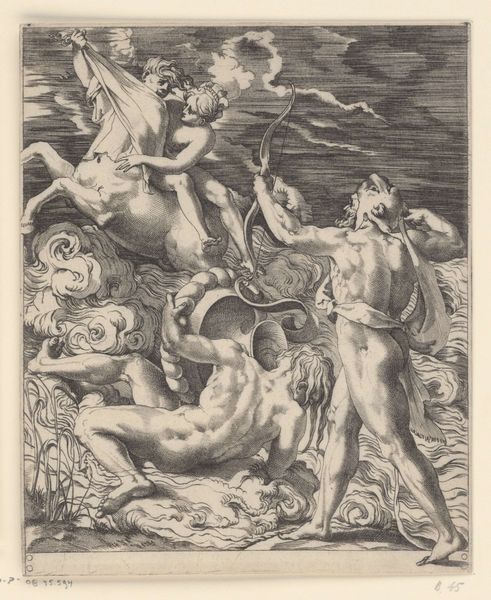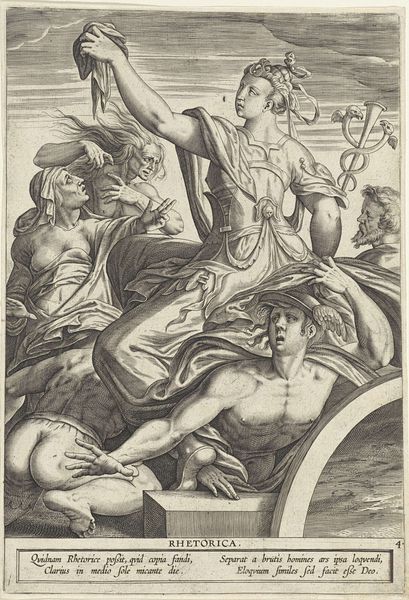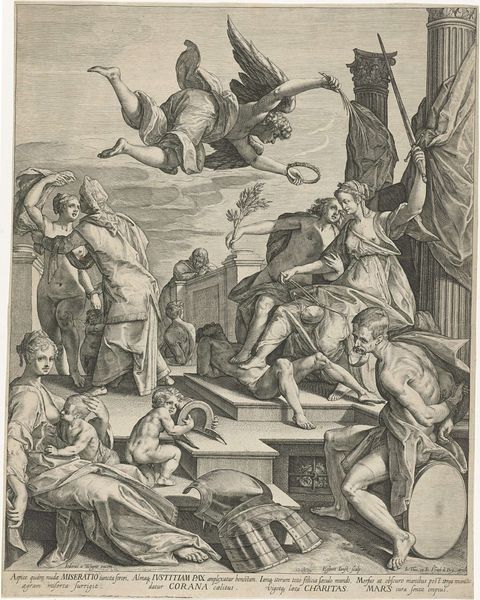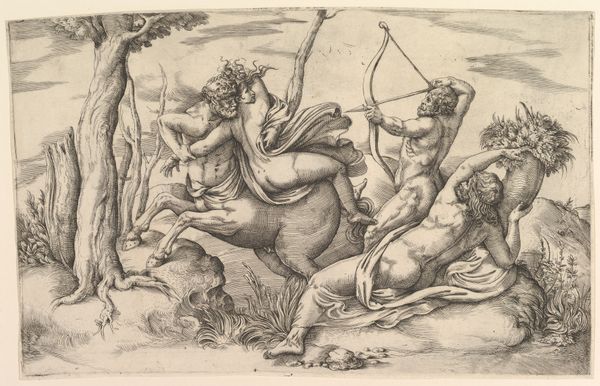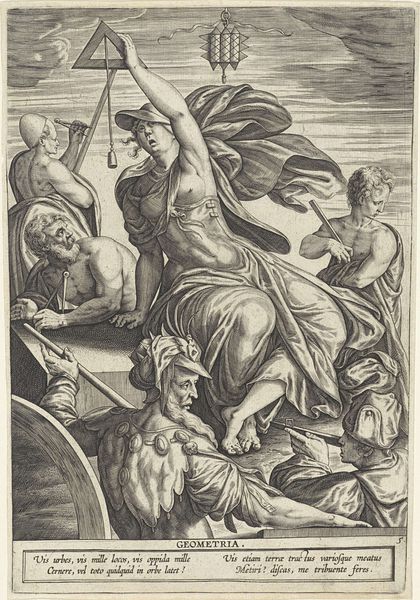
print, engraving
# print
#
mannerism
#
figuration
#
history-painting
#
engraving
Dimensions: height 221 mm, width 179 mm
Copyright: Rijks Museum: Open Domain
Editor: We’re looking at "Hercules in gevecht met centauren," or Hercules in Battle with the Centaurs, an engraving by Giovanni Jacopo Caraglio from sometime between 1515 and 1565, currently housed in the Rijksmuseum. There's such a frenzy of action in the composition; it feels so chaotic! What details jump out to you? Curator: Looking at Caraglio’s "Hercules," I’m struck by the physical demands inherent in its creation. Consider the labor invested in meticulously incising the copperplate. The burin’s controlled drag, the physical exertion... each line represents hours of skilled work. This isn't just an image; it’s the result of a very specific mode of production, and Caraglio, his mastery over the material world to convey a sense of movement. Editor: I never considered the artist's physical contribution so closely. How might the print medium influence how this story of labor, or “travail," is interpreted? Curator: Think of the print’s function. Multiple impressions mean wider circulation. A heroic tale like Hercules’ gets reproduced, disseminated, commodified even. The narrative itself becomes a kind of "product," marketed to a specific social stratum, reinforcing certain values and hierarchies through consumption of imagery. Notice, also, how the mannerist style elevates artifice – look at their muscularity, and ask yourself, does it make this ‘real,’ or distanced from reality. What message did that send? Editor: So, we can interpret this artwork by considering both the labour of the artist, and the commodification of the narrative, shaped by style. Curator: Precisely. By examining the material conditions and the social context of its creation and consumption, we reveal layers of meaning beyond the surface narrative of heroic combat. It is important to know who gets to reproduce whose body through labour! Editor: That's given me a completely fresh way to understand this print. I hadn't considered its wider economic and social implications, or indeed whose physical form made it into circulation through labour. Curator: Seeing the art object not as some detached aesthetic artifact but as the product of concrete human effort changes everything.
Comments
No comments
Be the first to comment and join the conversation on the ultimate creative platform.
